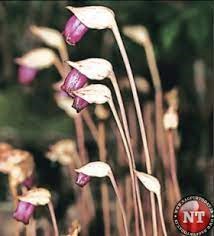Description

Disclaimer: Copyright infringement not intended.
Context
- A new plant species of Polygonum genus has been discovered at Gol Pahadi Island of the Pench Tiger Reserve in Maharashtra during a survey.
Details
- A new plant species named Polygonum Chaturbhujanum has been discovered at Gol Pahadi island of PTR. It is a herb.
- Six plant species endemic to India have also been found in Pench. They are Aegineta indica, Boerhavia crispa, Habenaria gibsonii var foetida, Iphigenia pallida, Petalidium barlerioides and Barleria gibsoniii, Shukla said in a release.
- Out of the various species reported during the survey, 294 are herbs, 157 natural trees, 131 climbers, 131 grasses, 52 shrubs and the remaining are avenue trees and epiphytic plants.
- The higher rate of biodiversity found in grass species is very interesting as Pench does not have extensive grasslands and most of the grasses are under canopy.
- Pench represents around 5.8 per cent of floral diversity of the entire country, which consist of 45,000 plant species, representing about 7 per cent of the world's flora and including more than 15,000 flowering plants.

Polygonum Genus: Brief Overview
- The Polygonum genus, part of the Polygonaceae family, comprises a diverse group of herbaceous plants known for their adaptability and wide distribution.
- Commonly referred to as knotweeds or smartweeds, these plants exhibit varying growth habits and are found in diverse ecosystems globally.
Key Points:
- Botanical Characteristics: Polygonum species are herbaceous perennials or annuals with distinctive jointed stems, often forming dense stands. The leaves are generally alternate and simple.
- Habitat: Polygonum plants thrive in various environments, including wetlands, meadows, riverbanks, and disturbed areas. Some species are considered invasive and can colonize habitats rapidly.
- Flowering: The flowers of Polygonum species are small, typically with five petals, and arranged in spikes or clusters. Flower color varies among species.
- Ecological Role: Some Polygonum species serve as important components of ecosystems, providing food and habitat for various wildlife. Others, however, can be invasive and compete with native vegetation.
- Cultural and Medicinal Uses: In traditional medicine, certain Polygonum species are used for their purported medicinal properties. Additionally, some have culinary uses in certain cultures.
- Invasive Species Concerns: Some members of the Polygonum genus, such as Japanese knotweed (Polygonum cuspidatum), are notorious for their invasive nature, causing ecological and economic challenges.
In summary, the Polygonum genus is a versatile group of plants with ecological, cultural, and medicinal significance. While some species contribute positively to ecosystems, others raise concerns due to their invasive tendencies and impact on native flora.
|
PRACTICE QUESTION
Q. Consider the following statements regarding the Polygonum genus:
1.Polygonum species are exclusively herbaceous perennials with simple, opposite leaves.
2.Some Polygonum species are known for their invasive nature, posing ecological challenges by outcompeting native vegetation.
3.All Polygonum plants have distinct clusters of flowers with more than ten petals.
4.The cultural and medicinal uses of Polygonum plants are limited, with minimal historical significance.
Select the correct statements using the codes below:
A) 1 and 3 only
B) 2 and 4 only
C) 1 and 2 only
D) 2 and 3 only
Answer:
C) 1 and 2 only
|












